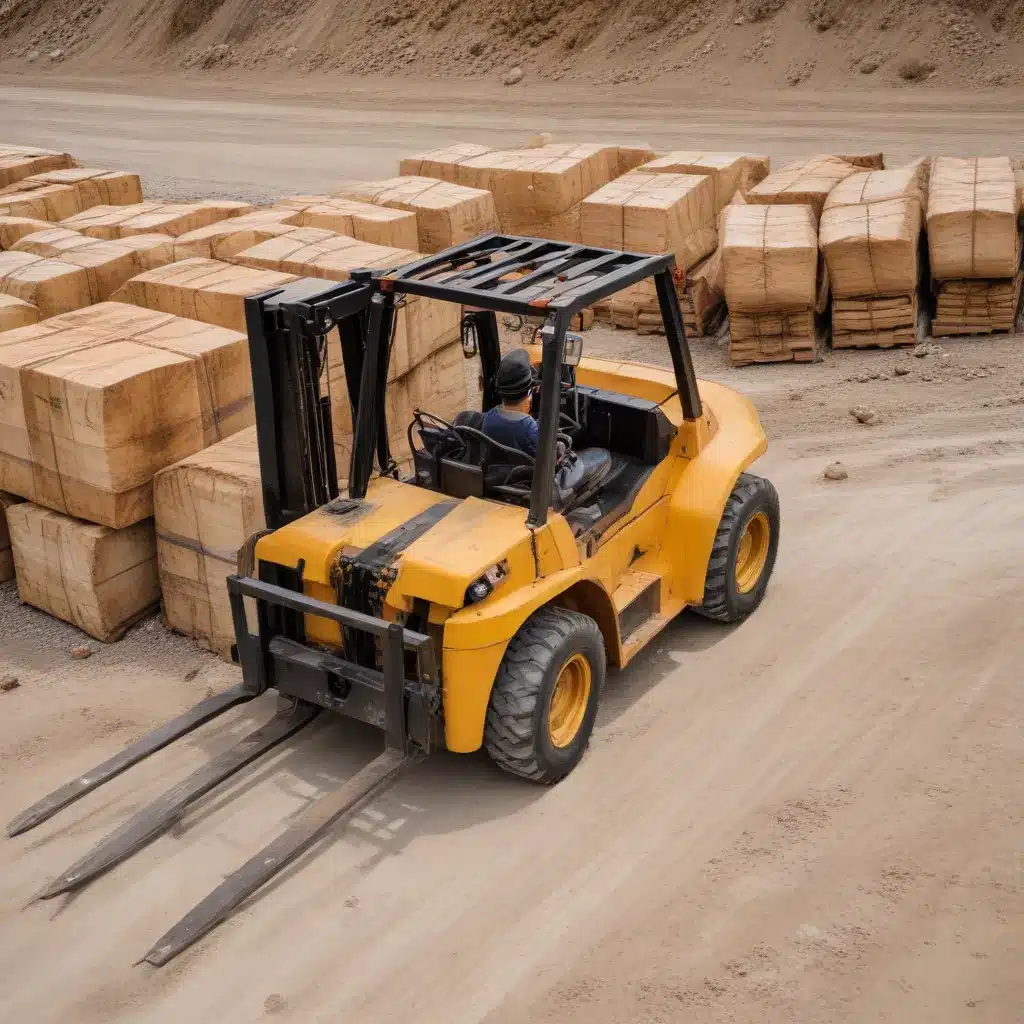
Navigating the Forklift Leasing vs. Buying Dilemma: Insights for Businesses in the Mining and Extractive Industries
The Forklift Conundrum: Leasing or Buying?
As a seasoned industry expert in forklifts, warehousing, and logistics, you understand the pivotal role these machines play in the daily operations of businesses, particularly those in the mining and extractive industries. When it comes to acquiring forklifts, fleet managers often face a perplexing dilemma – should they opt for leasing or outright purchasing? This decision can significantly impact a company’s financial position, operational efficiency, and overall competitiveness.
In the fast-paced, ever-evolving world of material handling, the choice between forklift leasing and purchasing is a strategic decision that requires a deep understanding of the unique requirements and challenges faced by businesses in the mining and extractive sectors. Let’s delve into the key considerations that will help you navigate this critical decision-making process.
The Leasing Advantage: Flexibility and Adaptability
One of the primary appeals of forklift leasing is the flexibility it offers. In an industry where operational demands and technology can change rapidly, leasing provides businesses with the agility to adapt their equipment fleet to suit their evolving needs. Rather than being saddled with a static fleet of forklifts, companies can opt for short-term leases, easily upgrading or swapping out machines as requirements shift.
This flexibility is particularly valuable in the mining and extractive industries, where project timelines and material handling needs can fluctuate significantly. Leasing allows organizations to scale their forklift fleet up or down as needed, avoiding the burden of managing a large, fixed asset base. Additionally, the option to regularly upgrade to the latest forklift models ensures that businesses always have access to cutting-edge technology, enhancing productivity, safety, and efficiency.
The Purchasing Perspective: Long-Term Cost Savings and Asset Control
While leasing offers flexibility, outright purchasing of forklifts can provide long-term cost savings and greater control over the asset. By owning their forklift fleet, businesses in the mining and extractive sectors can benefit from the cumulative savings over the equipment’s lifespan, as the total cost of ownership is often lower than the accrued lease payments.
Furthermore, when organizations own their forklifts, they have the autonomy to maintain and customize the equipment to suit their specific operational requirements. This level of control can be particularly advantageous in industries where specialized attachments or modifications are necessary to handle unique materials or operating environments.
Additionally, forklift ownership allows for the potential resale of the equipment, which can provide a valuable avenue for recouping a portion of the initial investment. This can be especially beneficial for businesses with long-term projects or a stable, predictable material handling demand.
Evaluating the Total Cost of Ownership
When weighing the leasing vs. purchasing decision, it is crucial to conduct a comprehensive analysis of the total cost of ownership (TCO) for each option. This evaluation should consider not only the upfront costs but also the ongoing expenses associated with maintenance, repairs, insurance, and residual value.
In the mining and extractive industries, where operating environments can be demanding and maintenance requirements can be more intensive, the TCO analysis becomes even more critical. Businesses must carefully assess the potential for increased repair costs, downtime, and the impact on productivity when deciding between leasing and purchasing forklifts.
Navigating Industry-Specific Considerations
The mining and extractive industries present unique operational challenges that can influence the forklift acquisition decision. Factors such as site accessibility, rugged terrain, and exposure to harsh environmental conditions may necessitate the selection of specialized forklift models or the implementation of more extensive maintenance protocols.
Leasing can provide a viable solution in these instances, as it allows businesses to access the latest forklift technologies designed to withstand the rigors of the mining and extractive environments. Conversely, purchasing may be the preferred choice for organizations with stable, long-term material handling needs and the in-house expertise to manage comprehensive forklift maintenance and repair.
Striking the Right Balance: Leveraging Data and Expertise
Navigating the forklift leasing vs. purchasing decision requires a delicate balance of financial analysis, operational considerations, and industry-specific expertise. Leveraging data-driven insights, such as historical usage patterns, maintenance records, and industry benchmarks, can help businesses make informed decisions that align with their long-term strategic goals.
Additionally, consulting with experienced industry professionals, forklift dealers, and financial advisors can provide valuable guidance in assessing the pros and cons of each option, ultimately helping organizations in the mining and extractive sectors make the most advantageous choice for their unique circumstances.
Forging Ahead: The Future of Forklift Acquisition
As technology continues to evolve and disrupt the material handling landscape, the forklift leasing vs. purchasing dilemma will likely become increasingly complex. Advancements in areas such as automation, electrification, and data-driven fleet management will continue to shape the decision-making process.
Businesses in the mining and extractive industries must remain vigilant, staying up-to-date with industry trends and innovations to ensure that their forklift acquisition strategies remain aligned with their long-term operational and financial goals. By combining data-driven analysis, industry expertise, and a forward-looking mindset, these organizations can navigate the forklift leasing vs. purchasing conundrum and unlock new levels of efficiency, cost savings, and competitive advantage.
Ultimately, the choice between leasing and purchasing forklifts is not a one-size-fits-all solution. It requires a deep understanding of your business’s unique needs, a thorough evaluation of the financial implications, and a keen awareness of the industry-specific challenges that shape the material handling landscape. By carefully weighing these factors, you can confidently navigate the forklift acquisition dilemma and position your mining or extractive business for long-term success.

